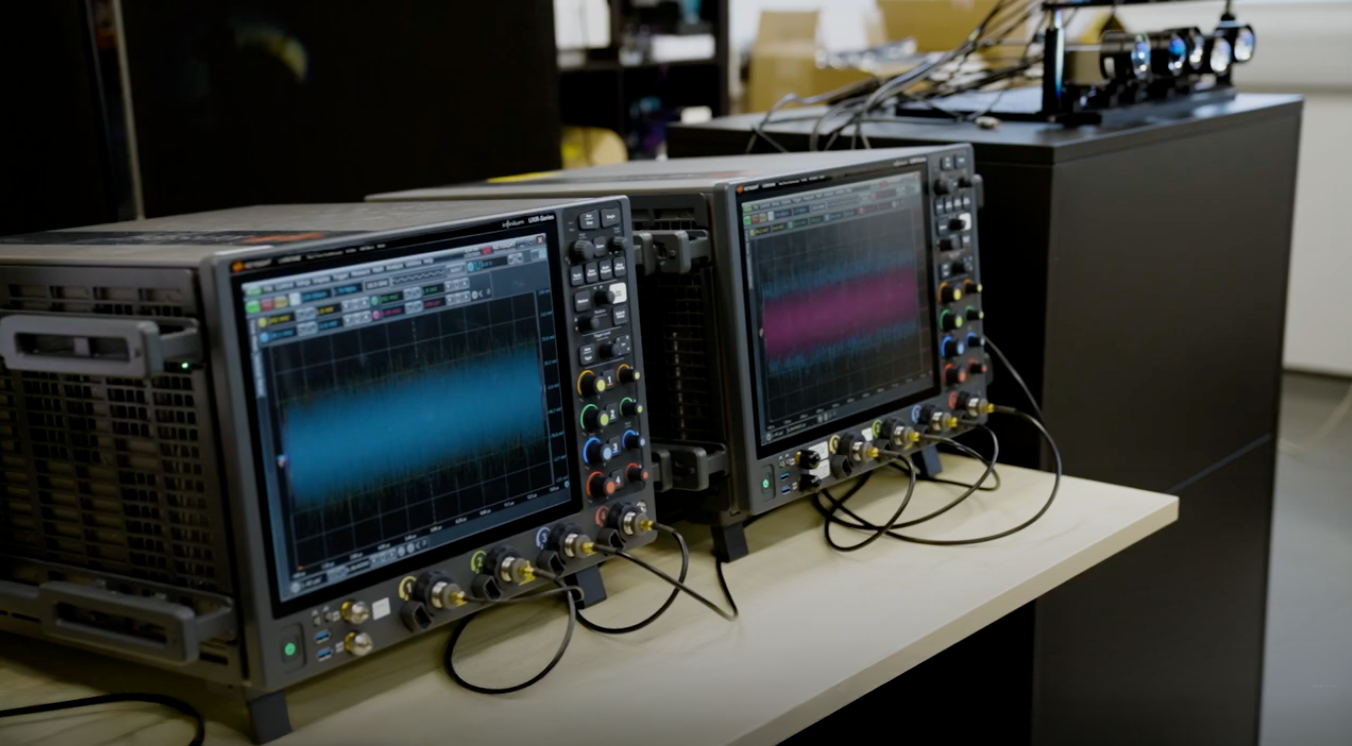How artificial intelligence is improving spectrum utilisation and boosting performance in next-gen optical systems

|
Lead Institution: |
|
| Project Partners: |
|
| Supported by: | |
| Challenge: |
|
| Solution: |
|
| Impact: |
|
THE CHALLENGE: Today’s networks are under growing pressure
 Today’s networks are under growing pressure. As emerging technologies like 5G, 6G, AR/VR, IoT, cloud services, and AI continue to evolve, they’re driving an explosion in data demand, placing unprecedented strain on existing fibre infrastructure. And this demand is only going to increase.
Today’s networks are under growing pressure. As emerging technologies like 5G, 6G, AR/VR, IoT, cloud services, and AI continue to evolve, they’re driving an explosion in data demand, placing unprecedented strain on existing fibre infrastructure. And this demand is only going to increase.
Traditional optical networks mostly operate within the C-band, but multi-band (MB) elastic optical networks (EONs) offer a powerful alternative. By unlocking additional spectral regions such as the L and S bands, MB-EONs expand the usable spectrum from around 5 THz to as much as 20 THz. So far, so good.
The challenge? Managing this expanded spectrum is becoming increasingly complex. Conventional algorithms simply aren’t up to the task. The result is a high rate of service blocking, where connection requests are denied or dropped, leading to poor user experience and significant inefficiencies in resource use.
THE SOLUTION: A new approach to spectrum management
A new approach to spectrum management is required. The team wanted to establish new ways of addressing four main issues:
- Service blocking
- Complex spectrum management
- Quality of transmission (QoT)
- Scalability
The team turned to AI and deep reinforcement learning (DRL), which is the same novel technology used to power things like autonomous driving algorithms and robots learning to walk, jump, or perform a backflip.
Reinforcement Learning (RL) is a type of machine learning where an (AI) agent learns to make increasingly better decisions by interacting with its environment. It gets rewarded for correct calculations and optimisations and penalties for bad decisions.
Deep learning (neural networks) allows the agent to handle more complex, high-dimensional environments.

KEY TECHNICAL INNOVATIONS: Applying DRL to network management
Applying DRL to network management, the team developed an innovative framework designed to do a number of things.
Learn and continually improve
The new framework learns by interacting with simulated networks, rewarding itself for successful provisioning. Inputs to the DRL include both route-level and band-level features, giving it a rich view of the whole network and current conditions. This allows it to adapt and make holistically informed decisions.
The DRL accelerates its own learning and optimises for long-term throughput (not just short-term wins). The innovative reward function enables it to learn effective strategies way beyond what traditional heuristics can achieve.
The system trains itself to get better over time instead of needing constant human fine-tuning.
Handle complex spectrum management
DRL handles the complexity of multiple bands and modulation formats that traditional algorithms simply cannot. It can dynamically allocate spectrum across MB-EONs, making more efficient use of the available spectrum.
Provide sufficient signal quality
The built-in QoT assessment model ensures that allocated resources provide sufficient signal quality, avoiding wasted or unusable connections. It does this by profiling the real performance of modulation formats per channel, so the algorithm makes physics-aware decisions. This means fewer wasted resources and ultimately more reliable connections overall.
Network adaptivity
AI adapts and scales with growing demand, unlike static rules.
THE RESULTS
- Service blocking reduced by 35% – 85% compared with existing heuristic methods: Making networks significantly more efficient and capable of handling surging traffic.
- Improved resource utilisation: Allocating spectrum more efficiently and with higher QoT guarantees.
- Scalability: System adapts to increased traffic loads and network complexity.
- Operational efficiency: Operators can serve more users and higher bitrates without physically laying more fibres (which is costly, disruptive and not always viable – especially in built-up areas). Boosting capacity in this way offers a more effective and sustainable way to scale.
This method avoids the need for costly, high-emission fibre deployment, aligning with the UK’s sustainability goals and net-zero strategy by maximising existing infrastructure efficiency. This innovation could benefit many real-word applications including 5G and 6G backhaul, high throughput networks and even data centre interconnects for hyper-scalers such as Google and Meta. Without solving these issues, users face slower speeds, dropped connections, and spiralling infrastructure costs. For users, this innovation means improved services such as consistently reliable streaming and improved mobile performance.
TIME TO DEPLOYMENT
- Short term: Algorithm validated in simulation; lab prototypes are feasible now
- Medium term (3–5 years): Field trials for 5G backhaul expected as MB optical systems evolve
- Long term (5–10 years): Key enabler for 6G core network infrastructure and widespread MB-EON adoption
This is not something operators can roll out tomorrow, but it is an important stepping stone towards preparing optical infrastructure for 6G-scale traffic. By laying the groundwork now, operators will be ready for a future where 6G-scale traffic is not longer a challenge, but a significant opportunity.
“Proud to see how AI can reshape optical networking for the next generation of scalable, resilient infrastructures.” – Shuangyi Yan (Associate Professor & Programme Director at University of Bristol)
TEAM & PAPERS
University of Bristol – Smart Internet Lab
- Yiran Teng
- Haiyuan Li
- Shuangyi Yan
- Dimitra Simeonidou
Chalmers University of Technology, Sweden
- Carlos Natalino
- Paolo Monti
Universidad Carlos III de Madrid, Spain
- Farhad Arpanaei
- Alfonso Sánchez-Macián
Supporting Projects
- ECO-eNET – EU-SNS funded initiative for energy-efficient confluent networks
- ALLEGRO EU – Horizon Europe project for ultra-low energy secure networks
Paper: DRL-Assisted QoT-Aware Service Provisioning in Multi-Band Elastic Optical Networks – https://ieeexplore.ieee.org/abstract/document/11131684
Download the case study: https://allspectrumhub.org/wp-content/uploads/2025/09/Case-Study-DRL-Assisted-QoT-Aware-Service-Provisioning_01-0925.pdf
Want to stay involved? Keep an eye on our channels for updates, opportunities, and news from across the HASC community.





